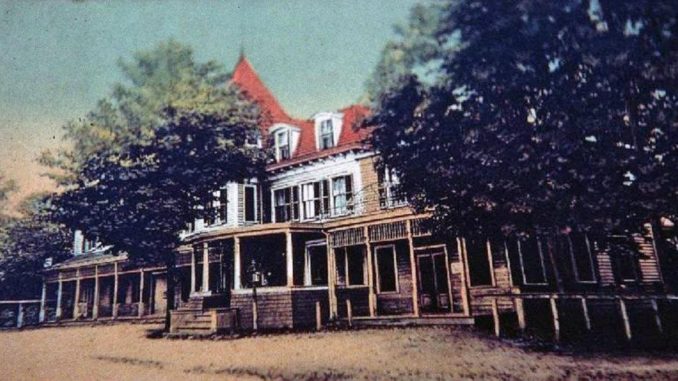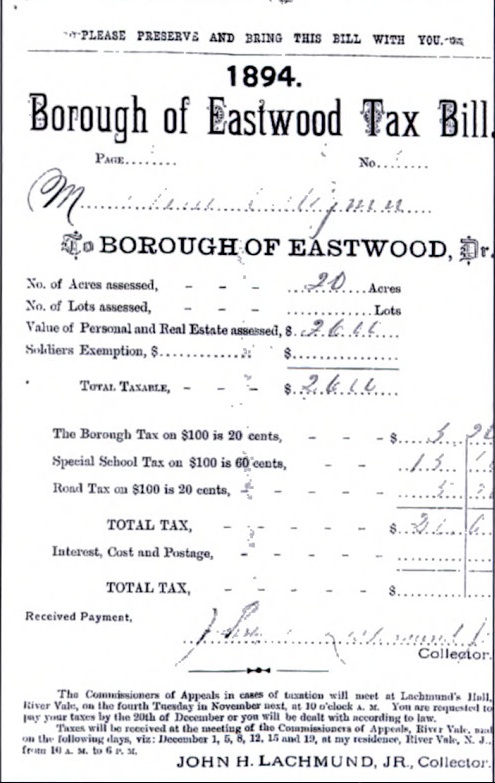
Eastwood was the shortest-lived borough in Pascack Valley history. No doubt some people reading this live on land that was once Eastwood, but they have probably never heard of it. That’s because the little borough, which started on June 6, 1894, was around for two years before dissolving.
Once located at the border of southern River Vale and Old Tappan, Eastwood joined 26 other Bergen County municipalities that formed in 1894 in a phenomenon that newspapers of the time labeled “boroughitis.”
In 1894, legislation called the Township School Act was passed. In an effort to equalize education opportunities, it consolidated independent community school districts into larger township districts.
Back then, our Pascack Valley communities of Emerson, Hillsdale, Montvale, Park Ridge, River Vale, Westwood and Woodcliff Lake were all part of a larger territory, the Township of Washington. There were little school houses scattered across the township, each controlled by the residents who lived around it.
As a side effect of the School Act, the consolidated township school district took on the property—and the debts—of the individual districts that were now under its purview. Being saddled with debts from neighboring communities wasn’t something taxpayers were prepared to accept.
The new law had a loophole: A community could shed responsibility for the regional school debt, as well as gain more local control over tax dollars, if it broke away to form an independent municipality.
As a result, communities scrambled to incorporate. Like a domino effect, Westwood led the pack, with Park Ridge, Eastwood, Woodcliff Lake, and Montvale also following along the same year. Hillsdale followed in 1898, Emerson in 1903 and River Vale in 1906. Only a small portion of the original township remained, and that’s what we now know as the Township of Washington.
Eastwood formed from perhaps the most isolated and sparsely populated corner of the township. Without a railroad line running through it, development of this section had never taken off.

One might say that Eastwood was doomed from the start, as the borough’s beginnings were on shaky ground. Eastwood’s Democratic founders laid out the borough’s boundaries to avoid known Republicans, zig-zagging around properties to include some farmhouses and exclude others. News reports from the time also alleged that the town fathers had maneuvered the borough lines to exclude non-whites, swerving around the houses of black tenant farmers.
“When the work of the borough makers was completed they had a community of 90 legal voters composed of only white men, who stand politically 77 Democrats to 13 Republicans,” wrote the Passaic Daily News on May 29, 1894.
Not surprisingly, when the new borough held its election on June 26, 1894, a slate of Democrats was elected. The first and only mayor of Eastwood was Garrett R. Hering (1831–1898), a gentleman farmer and former Bergen County sheriff.
It was political rivalry that brought about Eastwood’s demise. A rift among the Democrats saw a faction of that party team up with Republicans and initiate a movement to dissolve the borough and return to the Township of Washington. A vote at Lachmund’s Hall (shown at left) on March 26, 1896 saw ballots cast 47–32 in favor of dissolving.
A portion of Eastwood east of the Hackensack River was quickly annexed by the newly formed Borough of Old Tappan. However, the majority of the defunct borough reverted back to the Township of Washington and remained there for the next decade. It was included as part of southern River Vale when the township formed in 1906.
